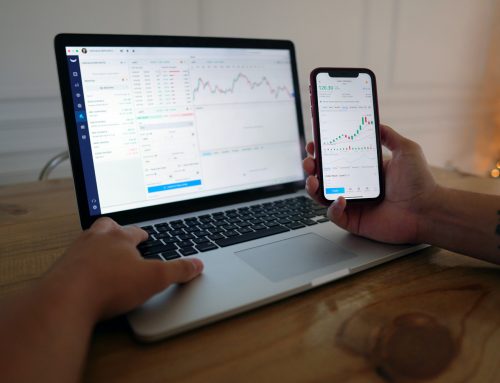Swing Trading Success with VectorVest
10 steps for a successful swing trading plan

by Dr. David Paul
This is a written walk-through of the talk that I presented during the 2022 VectorVest Two-Day Investment Seminar. I used many charts to illustrate the points below and their nuances in the talk.
You can view the presentation in its entirety by ordering the seminar free of charge at www.vectorvest.com/stream.
The following ten steps should be a part of any swing trading plan:
- The overall market is on your side. This means that you are initiating a swing trade in a stock that is moving in the same way as the overall market. On VectorVest, there are many measures of Market Timing. Fast measures for swing traders and longer-term measures for position traders. To initiate a swing trade, in my humble opinion at least, the Primary Wave on VectorVest should be Up and the advice on the Home Page of VectorVest should be positive for buying stocks. I firmly believe that this is 70% of the exercise. Swim with the stream.
- The industry group and sector of the economy are on your side. Stocks tend to follow their industry group up or down. Simply load the industry group in the Viewers page of VectorVest and re-sort by Relative Timing, RT. This will easily find those areas of the economy that are performing.
- Trade in the very best stocks. Companies that are growing earnings strongly and reasonably safely. Favor stocks that show strong earnings per share (EPS) growth over at least the last year with little volatility in the EPS chart. EPS growth is the engine that drives the stock price. The latter should be rising from the bottom left of the window on VectorVest to the top right. A stock that trades sideways while EPS is rising makes for an excellent high-probability swing trade when the stock breaks upwards and moves to a VectorVest Buy recommendation. Forecasted EPS on VectorVest is a strong leading indicator of change. Leading indicators of change are in very short supply in this line of work.
- The stock you’re considering should be in an existing uptrend. Our job as swing traders is to finesse an elegant entry from a retracement (this is trader jargon for a pullback in the stock price) in a stock that is just about to explode higher as the longer-term trend reasserts itself. On VectorVest, the Comfort Index (CI) finds stocks that are in the throes of a strong long-term trend, easily with little fuss. It is indeed a secret weapon. Swing trade in stocks that possess a CI of greater than 1.30 and both your hit rate and risk to reward will improve.
- Most pullbacks will retrace to the last significant swing high. Frequently this will also be a major Fibonacci level. This pullback should take place on falling volume. A pullback in the stock price on low volume in relation to the last advance is a sure sign that, sooner or later, the bull trend will resume. There are many ways a stock can pause within a strong trend and give swing traders an excellent entry point. Technical patterns such as flags, falling wedges and cup and handle patterns can make excellent entry points. In all of these, the down move within the pattern should show falling volume, while up moves within the pattern should show increased volume.
- A technical momentum indicator, such as George Lanes Stochastic indicator can confirm that support (or buying of stocks) should be anticipated. The study is normalized between 0 and 100 with a Stochastic value of less than 20 indicating an oversold position in a stock. This is an exciting place to look for a buying opportunity. A divergence between the stock price and the Stochastic adds to the strength of this observation.
- A bullish candlestick reversal pattern confirms that the support has a high probability of holding and that the advance has started. An Up day with rising volume would be first prize. There are many candlestick patterns, but I personally use just a few. I favor bullish engulfing, hammer, morning star and harami (inside bars) patterns. It is now time to open the brokers market maker and buy some stocks.
- Firstly, how much money is in your account? If you do not know how much money is in your account, you cannot size positions and if you cannot size positions, you are gambling and not trading. Vow never to lose any more than 1% of your account in any single trade.
- Size your positions. Use the VectorVest Stop and calculate the Risk/Share purchased. This is simply the purchase price minus the VectorVest calculated Stop-Loss level. If N is the number of shares about to be purchased, then the simple equation is that N*Risk/Share=1% Account Size. Thus N=1% Account Size/(Risk/Share).
- Split the position purchased in to two equal parts. When the position has risen, and you have profited by as much as the initial risk, sell one part. Increase the Stop-Loss level on the second part to entry and let it run. Do not micromanage the second part and allow this part to run using the VectorVest Stop-Loss as the Trailing or Rachet Stop. My experience is that around 30% of trades will result in what I refer to as “runners.”
If you plan on swing trading in 2022, then the above should give some strong guidelines to formalizing a trading plan.
Try VectorVest Today and Improve Your Results!
You will receive:
- Instant access to the award winning VectorVest system.
- Analysis on over 16,500 stocks daily with Buy, Sell and Hold ratings.
- Critical market timing signals that will help you avoid market crashes.
- Model portfolios that consistently make money following rules-based, high-probability trading plans.








Leave A Comment